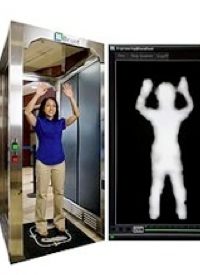
The Transportation Security Administration has undergone harsh criticism in recent months for its use of naked body scanners during screenings. The majority of the criticism has focused on the constitutionality and intrusiveness of the scanners. New studies reveal, however, that there is yet another reason to oppose the airport naked body scanners: they fail to secure airports.
Fox News reports, Any would-be terrorist can easily outsmart the ubiquitous backscatter scanners found in major airports around the world, two scientists say.
Ironically, it was the purported effectiveness of the scanners that security officials touted in order to assuage concerns over the use of the invasive scanners. Two physics professors at the University of California, Leon Kaufman and Joseph W. Carlson, contend that is not the case. In a recent paper published in the Journal of Transportation Security, Kaufman and Carlson assert that the body scanners can easily be fooled.
Fox News explains, Experts have already highlighted that such machines are unable to detect hidden plastic explosives. The authors of the new paper expand on these limitations and it couldn’t come at a worse time, as families prepare for holiday travel plans.
The abstract for the paper, entitled An evaluation of airport x-ray backscatter units based on image characteristics, reads:
Little information exists on the performance of x-ray backscatter machines now being deployed through UK, US and other airports. We implement a Monte Carlo simulation using as input what is known about the x-ray spectra used for imaging, device specification and available images to estimate penetration and exposure to the body from the x-ray beam, and sensitivity to dangerous contraband materials. We show that the body is exposed throughout to the incident x-rays, and that although images can be made at the exposure levels claimed (under 100 nanoGrey per view), detection of contraband can be foiled in these systems. Because front and back views are obtained, low Z materials can only be reliable detected if they are packed outside the sides of the body or with hard edges, while high Z materials are well seen when placed in front or back of the body, but not to the sides. Even if exposure were to be increased significantly, normal anatomy would make a dangerous amount of plastic explosive with tapered edges difficult if not impossible to detect.
Citing a variety of data, the writers make some surprising assertions, including, It is very likely that a large (15-20 cm in diameter), irregularly-shaped, cm-thick pancake with beveled edges, taped to the abdomen, would be invisible to this technology ironically because of its large volume, since it is easily confused with normal anatomy.
The paper also states, It is also easy to see that an object such as a wire or a box-cutter blade, taped to the side of the body, or even a small gun in the same location, will be invisible.
Whats worse, as noted by the scientists, is that the problem cannot simply be solved by raising the level of X-ray exposure: Even if exposure were to be increased significantly, normal anatomy would make a dangerous amount of plastic explosive with tapered edges difficult if not impossible to detect.
Despite the conclusions found in the report, a spokesman for the TSA continues to maintain, Advanced imaging technology is a proven, highly-effective tool that safely detects both metallic and non-metallic, items concealed on the body that could be used to threaten the security of airplanes.
The spokesman also defended the use of the TSA scanners, as they are merely a one tool in an entire cache of anti-terrorism measures. TSA employs many layers of security that work collaboratively to form a system that gives us the best chance to detect and disrupt the evolving threats we face.




